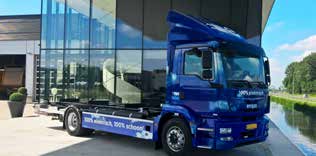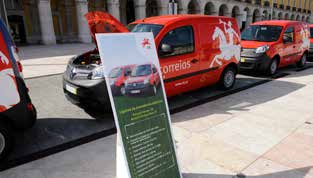Primer for Improved Urban Freight Mobility and Delivery
|
||
Key Accomplishments
|
European governments at all levels have set ambitious targets for reducing emissions of air pollutants and carbon dioxide from vehicles in cities. The use of all-electric vehicles for freight and passenger transport is widely recognized as a primary strategy for eliminating tailpipe emissions. The European Commission funded the Freight Electric Vehicles in Urban Europe (FREVUE) project to test the suitability of the newest generation of electric vehicles for last-mile deliveries in urban areas. The FREVUE project, which ran from 2013 to 2017, exposed more than 80 all-electric freight vehicles to the day-to-day rigors of the urban logistics environment.
The FREVUE project was conducted by a team of 17 industry partners, nine public-sector bodies, and six research organizations. The project deployed all-electric vehicles in eight major European cities: Amsterdam, Lisbon, London, Madrid, Milan, Oslo, Rotterdam, and Stockholm. Each of the FREVUE demonstrations varied in the types of vehicles they deployed, the types of goods that were delivered, and the logistics models that were tested. The project had three main phases:

An Emoss 20-ton (18.5-tonne) all-electric truck deployed for the FREVUE pilot in Rotterdam, Netherlands. Source: FREVUE.
The economic analysis showed that for small electric freight vehicles (≤3.9 tons) that are driven at least 37 miles (60 km) a day, the total cost of ownership comparison can be favorable within about five years. For medium-sized vehicles (between 3.9 and 8.3 tons), it is more challenging but still possible to find a positive business case. For the largest vehicles (>8.3 tons), the analysis did not find a positive business case for all-electric technology, even with currently available subsidies and a long depreciation period.

Renault Kangoo ZE and ZE Maxi all-electric vans deployed by the Portuguese national postal service for the FREVUE pilot in Lisbon, Portugal. Source: FREVUE.
However, the economic analysis noted that the business case can be affected by public policies such as exemption from congestion charges, a fee charged in some European cities for entering the city center during peak hours. The analysis also looked at how future reductions in the cost of batteries would affect the business case. The difference between the cost of electricity and diesel (or gasoline) is also a key driver in the total cost of ownership. The environmental analysis estimated that the FREVUE project led to reductions of nitrogen oxide emissions of up to 4,400 lbs. (2,000 kg) and reductions in particulate matter savings of more than 150 lbs. (70 kg). The analysis estimated the reduction in total environmental greenhouse gas emissions of 190 to 210 tons of carbon dioxide equivalent. This equates to a 45-percent savings by switching to electricity from diesel or gasoline, but the savings from each demonstration site varied considerably based on the local mix of electricity sources.
For other agencies planning a similar demonstration project, FREVUE project managers recommend that extra attention be paid to the process of monitoring vehicle performance and collecting vehicle data. FREVUE researchers received vehicle data from different types of monitoring devices, and the data files did not always use the same parameters. This made it more difficult to make comparisons across vehicles.
Tanja Dalle-Muenchmeyer, FREVUE Coordinator, Cross River Partnership/Westminster City Council, tdmuenchmeyer@westminster.gov.uk
|
United States Department of Transportation - Federal Highway Administration |
||